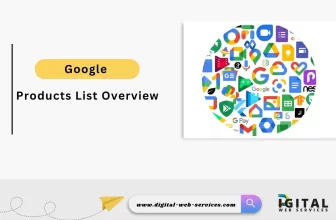
Businesses take a lot of planning because any miscalculation can backfire and affect the entire operation. A website is no exception as it’s one of the chief areas where intricate planning is necessary. As web developers, they must work hand in hand with the business’s marketing team to know exactly the direction of the project.
Checklist For Web Developers
Often, the mistake that’s made when developing websites is to leave web building entirely at the hands of information technology (IT) people. But for best results, the client and web developer should coordinate with each other to clearly identify what is expected of the outcome.
Here’s a List of Things to Consider Before Any Website Project:
1. Purpose
Establish why a client wants a website. Not everyone has this information ready when they first approach. Some might only know they want a ‘good website with a great design.’ While that’s great, it’s very little to work with.
Have them specify what their needs are based on the following guidelines:
- Is it supposed to be a site for their company?
- Will it be used to sell products?
- What information should be included?
- Will its main function be generating new leads and sales?
- Is it an e-commerce platform?
A website’s purpose can be a combination of any of the goals listed. What matters is narrowing down a business’s fundamental needs and how they can be met by the website to be designed. Sites specializing in web planning such as Slickplan should be considered to ensure one’s specific purpose for creating.
You shouldn’t begin anything unless you know what exactly is expected of you by the client. Plus, it’ll make your job easier if you know what the site is supposed to be. This will inform everything about how you design the site.
2. Domain Name
A good domain name should be search engine optimized. When someone is looking for information on the web, your website could show up in the results depending on your domain name.
A domain name should give search engine information about what it is. The more descriptive a domain is, the easier it is for search engines to find it. When a client approaches you, it’s best to brainstorm with them ideas for a domain name, then you may give suggestions to improve it.
3. Target Audience
You should look at the business and determine who its primary customers are, where they live, what their age and gender are, etc. Zero in as much as you can on the target audience, and use the information on the website to have its contents more specialized.
This process will help you once you start developing the site. You’ll know the tone to take with your content, which colors to use, and what structure might work best given the specified people in mind.
4. Check Out Competition
By studying your client’s competition, you aren’t just trying to identify techniques to incorporate in your design, but you’re also aiming to see what’s not working for them. Observe the way they communicate and the contents they are using. Try to study as well how and why certain websites are being patronized more than others.
5. Sitemap
Your website’s sitemap acts like the contents page of a book. It’s where you list all the information on your page. A sitemap will direct a search engine to your page when keywords are punched in, so its structure needs to be on point and all links need to be verified as working.
Some online programs can make this seemingly complicated task a breeze, so try researching the right one for your specific needs. Another thing to check when choosing a tool is the interface it uses to build and define page structures
6. Design
This is the part your client will probably come most geared to give their inputs on. If they have suggestions, take note of those and see how you can give them something close to what they want while still. The web design should represent the business’s purpose and target audience.
Aside from having criteria on what a website should look like, creating a mood board for it could help in visualizing the elements that can be done.
Conclusion
While designing a website is may seem complicated, it only takes a good plan to come up with simple procedures in making a high-performing site. Having a well-defined vision should be identified first before doing a project to make sure everything is going according to the client’s need.
Digital Web Services (DWS) is a leading IT company specializing in Software Development, Web Application Development, Website Designing, and Digital Marketing. Here are providing all kinds of services and solutions for the digital transformation of any business and website.










